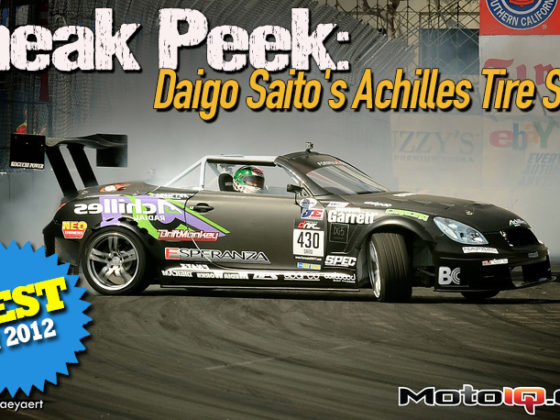,

Triangles everywhere…like a proper production based race car, the cage is extensively tied into the unibody. I am not sure what kind of material is used here in the cage, but it has the appearance of chromoly or DOM. There are plans to possibly take NEMO to Pikes Peak and other events all around the world. It's a good thing NEMO's cage is as extensive as it is. We all saw that video of that EVO falling off the mountain…

The driver's seat is now where the rear passenger's feet would have been. The floor pan remains mostly intact, but the tunnel and part of the floor have been cut out and replaced with steel for the seat mounts and harness anchors. The seat is also mounted much lower than the factory seating position of course.

The front section of the cage as it progressed. Even the windshield support is triangulated into the cage. Lexan windshields can collapse at speed without proper support. The super long steering column is now mounted with pedal box in place. The Peterson dry sump tank and cover are also mounted. Notice the sweet ass Geartronic paddle shifters. Looking through these pictures that Chris sent exclusively to us for this story, I can appreciate the quality of the build and parts used. It took over two years for NEMO to be where it is today and perfection like this cannot be rushed.

Here's the front end of NEMO mock assembled before paint. Notice the Sierra Sierra-esque combination of Full Race exhaust manifold, BorgWarner EFR turbo and HKS Kansai inlet plenum. Sometimes there's no need to reinvent the wheel. That's quite the path for the exhaust tube. I'm sure that was done at the suggestion of Andrew Brilliant, the aerodynamicist who designed NEMO's aero package. I'm certainly not an aero guy, but I think the floor would be much more effective aerodynamically with the exhaust running the way it does rather than along the bottom of the car. The CT9A EVO chassis does not have a tunnel for exhaust clearance if I remember correctly let alone room for a 3.5″ exhaust tube.

I suspect the only part kept from the original car other than the chassis, is the HKS Type-R intercooler core which is a very efficient and lightweight tube and fin core. Most of the front of the factory chassis is original Mitsubishi. The radiator support was obviously lopped off.

Here's the front subframe which has plenty of design and fabrication time in it despite its simple appearance. It bolts into the factory unibody, but accommodates the double A-arm front suspension that NEMO now runs (more pics on this on a later page). Even with all steel construction, its total weight is only 6Kg or 13.2lbs. The factory subframe is probably 3x the weight.



